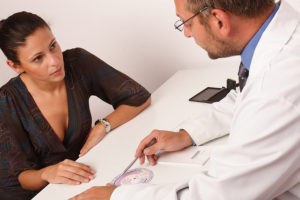Patient education involves the enhancement of knowledge in ways that can help people to manage or improve their health. To effectively educate patients, it’s important to gain clarity on what kind of personalized information each person needs and to identify what barriers might exist in accomplishing educational goals.
How information is delivered also plays a key role in today’s patient education. Physicians and other medical professionals have limited amounts of time in which to educate each person and this, in turn, reduces the amount of time in which patients can formulate and ask questions; absorb the answers; and determine if they understand the information provided and the options they have in their health management process. Delivering quality education sets up the foundation to promote positive patient engagement with the hospital staff, therefore increasing their overall experience and satisfaction.
That’s why healthcare organizations increasingly rely upon patient education technology to deliver customized information to patients and their families and to provide ways in which they can receive the clarification they need.
According to the American Academy of Family Physician (AAFP), the general process of educating patients includes the following steps:
- Identify the educational needs of a particular patient.
- As part of that process, also glean insights into that patient’s levels of understanding along with their health-related knowledge and beliefs.
- Discern what role their cultural background may play in this process.
- Appropriately tailor education to the patient.
- Clearly and concisely provide information.
- Describe recommended treatment plans and connect them to specific behaviors/actions.
- Encourage questions and answer them.
- Use appropriate written, visual, and computer-based materials.
This customized approach can come with plenty of meaningful benefits—and to fully realize them, imagine yourself experiencing a hospital stay from the perspective of a patient and their family.
Patient Perspectives
When someone needs to stay in the hospital, this can be quite a stressful experience. They often don’t feel well and they worry about diagnoses, treatments, potential outcomes, what’s going on at home while they’re hospitalized, and much more. The more that you can make the hospital stay comfortable, the better—and one way to reduce stress is to provide patient education that is easily understandable and digestible.
In today’s always-connected times, when people don’t have the information they need, many of them turn to “Dr. Google,” searching the internet for information about their symptoms—and often finding worrisome potential diagnoses. These diagnoses could very well be wrong and, even if there is some truth to the information, the Google searchers aren’t always in a situation where they can quickly ask a medical professional for more insights. This can cause unnecessary worrying and affect decision making capabilities. In these situations, having factual information from a physician can help people focus on creating a healthcare plan instead of dealing with free-floating anxiety.
For example, a physician only has a limited amount of time to provide a hospitalized patient and their family with a verbal explanation of a health issue. This can leave the patient longing for more in-depth knowledge and can trigger additional stress and worry.
Quality education is key.
Benefits of Patient Education
According to the National Institutes of Health (NIH), a key goal of patient education and engagement is to improve their health literacy: the “capacity to seek, understand, and act on health information. . . . Patients must have a deep understanding of the impact healthy interventions can have on their present and long-term health.”
When a person’s health literacy is limited, the NIH study recommends the avoidance of medical jargon; the provision of helpful explanations about unfamiliar forms; answering questions; and using the “teach-back method” to confirm that someone understands the information being presented.
According to the U.S. National Library of Medicine, teach-back methods can potentially boost self-care actions in patients while reducing adverse outcomes. When the interactive teach-back method is used, information must be presented in “plain language” and focus on core messaging. Then, ask the patient to explain the information that’s been given to ensure their understanding.
This process can build trusting relationships between patients and their medical care providers. Through this partnership, the patient then plays a role in making decisions, which can enhance their commitment to treatments and behavioral changes that are intended to maintain or improve their health status.
Possible Barriers in Delivering World-Class Patient Education
As your organization considers how to deliver educational insights to patients, it’s important to think about what barriers may exist and ensure that your solution addresses them. The AAFP lists several patient learning barriers, including the patient’s:
- Physical condition
- Financial situation
- Levels of literacy or comprehension
- Lack of support
- Cultural or language barriers
- Negative environment
- Lack of motivation or low sense of personal responsibility
- Harmful past experiences.
To address these challenges, AAFP recommendations include adapting information delivery to your specific patient in an environment where the patient is accepted and respected. Continue to build trust as you involve the patient in the education process, including in the establishment and evaluation of healthcare goals and progress. Give patients the opportunity to show how they understand the material presented.
As barriers are successfully addressed, this helps in the development of patient loyalty.
Patient Loyalty Benefits
From the perspective of healthcare organizations, patients are increasingly taking a consumer approach when seeking care, choosing among options. This makes a focus on building patient loyalty more important than ever—and one way to do so is through quality patient education. Patients appreciate the initiatives when hospitals and other healthcare facilities seek ways to attract, engage, and satisfy the people they serve.
 Interactive Patient Education Software
Interactive Patient Education Software
Healthcare organizations can leverage efficient technology to provide customized education to patients, identifying their levels of health literacy and other contributing factors to provide targeted insights. With a quality patient education platform, patients can receive the education they need to participate in their own healthcare processes; get answers to their questions; and otherwise connect with providers without frustrating delays.
By receiving technologically delivered education, they can be prepared to have productive healthcare conversations with their providers. This can lead to more informed decision making with less stress while also streamlining the process for physicians so that they can focus on providing the best healthcare possible.
Patient Education Platform: Journey PX
Deliver exactly the right educational materials at precisely the right time with the easy-to-use, intuitively structured Journey PX. You can customize what you deliver to each person with this modern, interactive patient education technology solution.
Benefits of Journey PX include the following:
- Your care teams can consistently and effectively educate patients.
- Your hospital staff can use the easily searchable patient education library to review relevant content before prescribing treatment.
- You can craft patient health information and insert this information in a patient’s record.
- Your healthcare teams can refer to this inserted information to monitor changes in a person’s health status among other benefits.
- This interactive patient education platform is so easy to use that patients and care teams can navigate it as needed.
- Education topics are wide ranging from pre- to post-operative content as well as information on wellness, disease, and safety subjects.
- This interactive patient education software allows facilities to extend the process beyond a person’s hospital stay because content can also be sent to a patient’s home by emails or text messages.
- This easily accessible source of information can lead to fewer patient calls and visits—even admissions.
- Journey PX can be seamlessly integrated into existing EMR, EHR, and ADT technologies, which means that your healthcare teams can continue to leverage the solution as patients get transferred within your facility.
- This technology can improve the overall performance of your facilities.
- You can use Journey PX to market, inform, engage with, and enlighten all visitors to your facilities about events and offerings.
This interactive patient education software is scalable, interactive, robust, and affordable—created to offer the ultimate patient experience.
More About the Patient Education Library
Thanks to our cloud-based media system, this comprehensive educational library allows your facilities to enhance health literacy through consistently delivered, up to date health-related information. You can prescribe and send targeted information to your patient’s hospital room, to clinics that will assist in that person’s healthcare, and to that patient’s own personal devices—both pre- and post-discharge.
The library contains thousands of videos available in multiple languages to help healthcare organizations provide easily understood content to patients. This also helps hospitals and other healthcare facilities to meet regulations from The Joint Commission National Patient Safety Measures, Core Measures, and Meaningful Use.
Here is a partial list of content:
- Patient Safety
- The Joint Commission Speak up Series
- Advance Directives
- ICD10 Codes and DRGs
- Pain Management
- Medication Education
- Pediatrics
- Mother-Baby, New Family
- Pre- and Post-Operative Care
- Information on Most Diagnoses, Conditions, and Treatments
Your facilities can also include comprehension questions and ones about patient satisfaction to determine if the patient or their family members could use additional information. Plus, your healthcare organization can upload even more information in text or video formats to further enhance education and engagement through an intuitive uploading tool. This can include welcome videos, supplemental patient education content, and more.
More about Soothing Sounds
Journey PX also contains soothing soundscapes. Evidence shows that soundscapes can help patients feel safe and less stressed which in turn helps boost patient health outcomes. A study by the National Academy of Sciences in the United States of America focuses on natural sounds that people can hear in nature parks. The results “affirm that natural sounds improve health, increase positive affect, and lower stress and annoyance.”
The soothing sounds embedded within the Journey PX patient education platform can mimic those found in nature and they can therefore help people to enjoy the benefits available to visitors in natural surroundings. As patients in your healthcare facilities manage their states of mind more effectively, this can enhance their recuperation as they can more easily discuss their health conditions and treatment plans while in a more relaxed state of mind.
In addition, Journey PX incorporates entertainment forms within the software. Researchers have examined the impact on strategically provided entertainment when it comes to increasing how people will make healthy choices.
One such study involved a soap opera sub-plot on Dutch television where a character who was making unhealthy lifestyle choices changed his behavior after his fictional father suffered a heart attack. People involved in the study then measured social media posts for relevant content and discovered that this entertainment appears to have influenced lifestyle choices in the viewing area.
More about Patient Satisfaction Surveys
In the NIH study, “Patient Satisfaction Survey as a Tool Towards Quality Improvement,” it’s noted how healthcare organizations can leverage surveys to quantify satisfaction and improve upon its delivery. The study overview shares how they can be a “significant quality improvement tool,” one that is “not being systematically and extensively utilized for developing improvement initiatives.”
More specifically, patient satisfaction surveys can identify service gaps, review quality initiatives, measure how well information is being communicated to patients and families, monitor how well care is being delivered, and more.
Healthcare organizations can deliver surveys through the Journey PX; glean insights from the results; and use them to improve. Because many healthcare facilities are not strategically using surveys, when you do, this can provide your organization with a competitive advantage and help you to build patient loyalty.
Contact MDM for Your Patient Education Technology
MDM is your comprehensive source for patient education software solutions. Besides offering the actual software, we also offer the professional services to get you set up with your powerful new technology.
Our expert team is ready and willing to discuss how you can incorporate the Journey PX patient education platform to fit your unique requirements as well as your budget. Just schedule a demo. We’ll listen to what you need, promptly answer your questions, recommend a customized system, and schedule installation so that you can start educating and engaging patients as part of your complete patient care continuum.

 Interactive Patient Education Software
Interactive Patient Education Software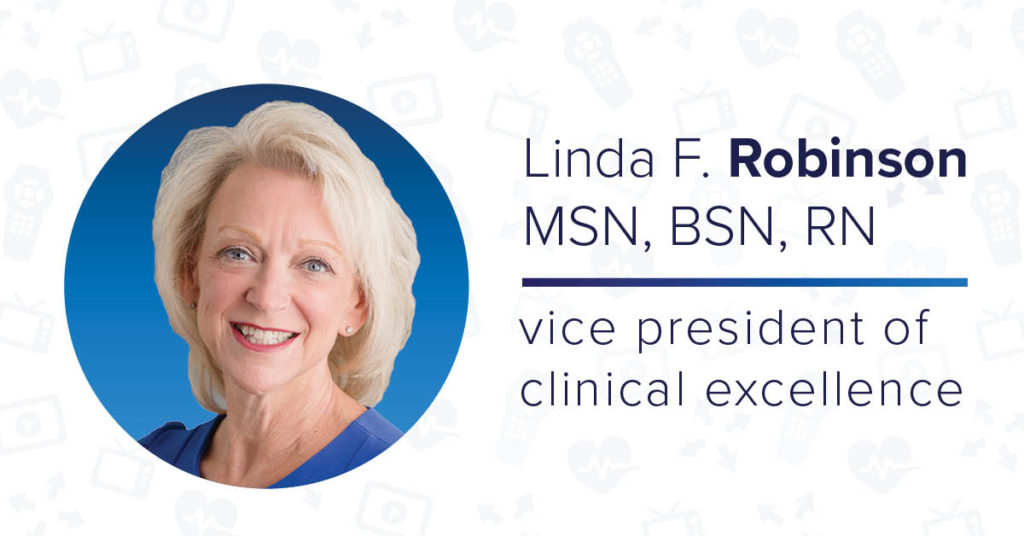
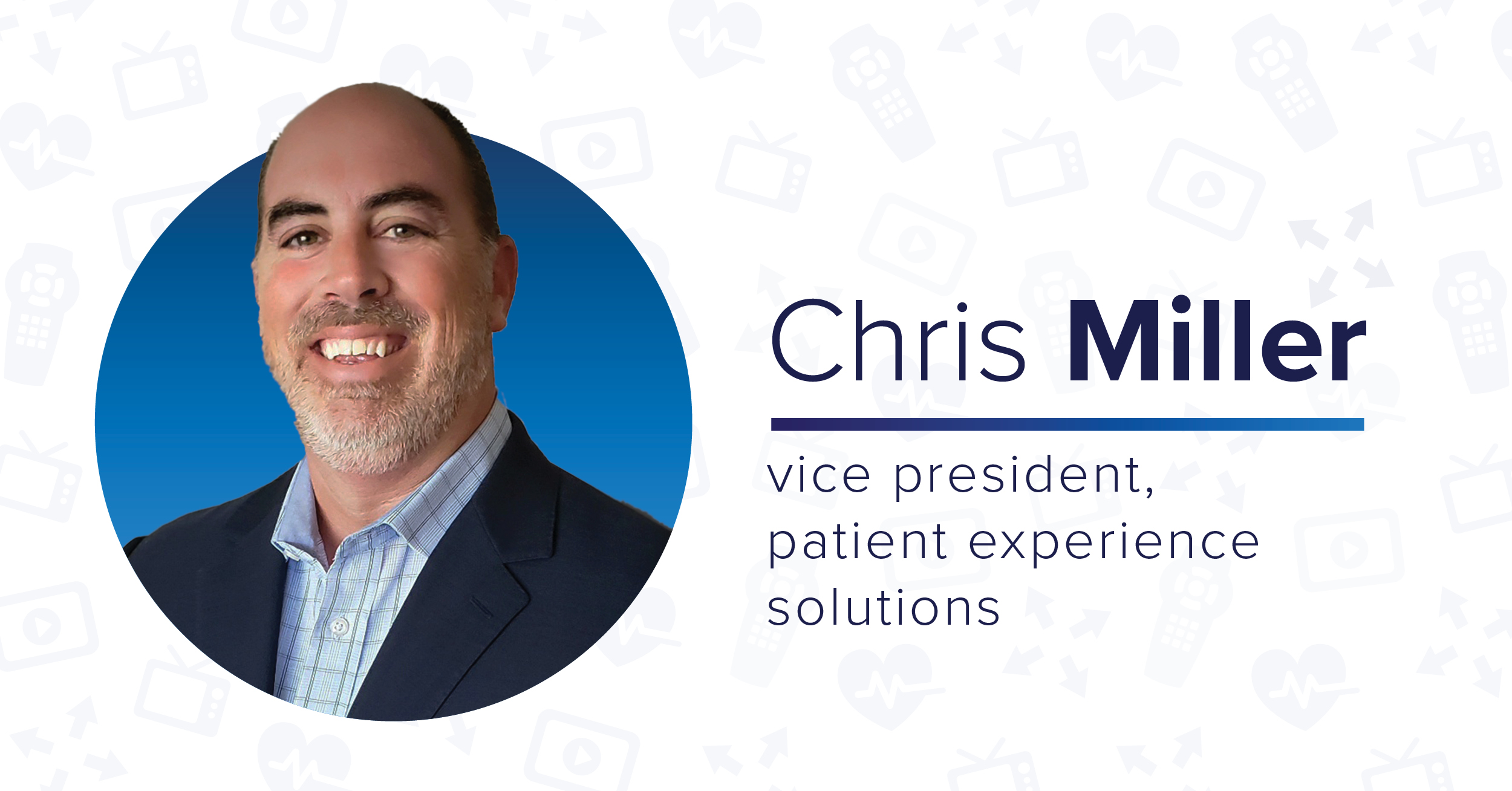
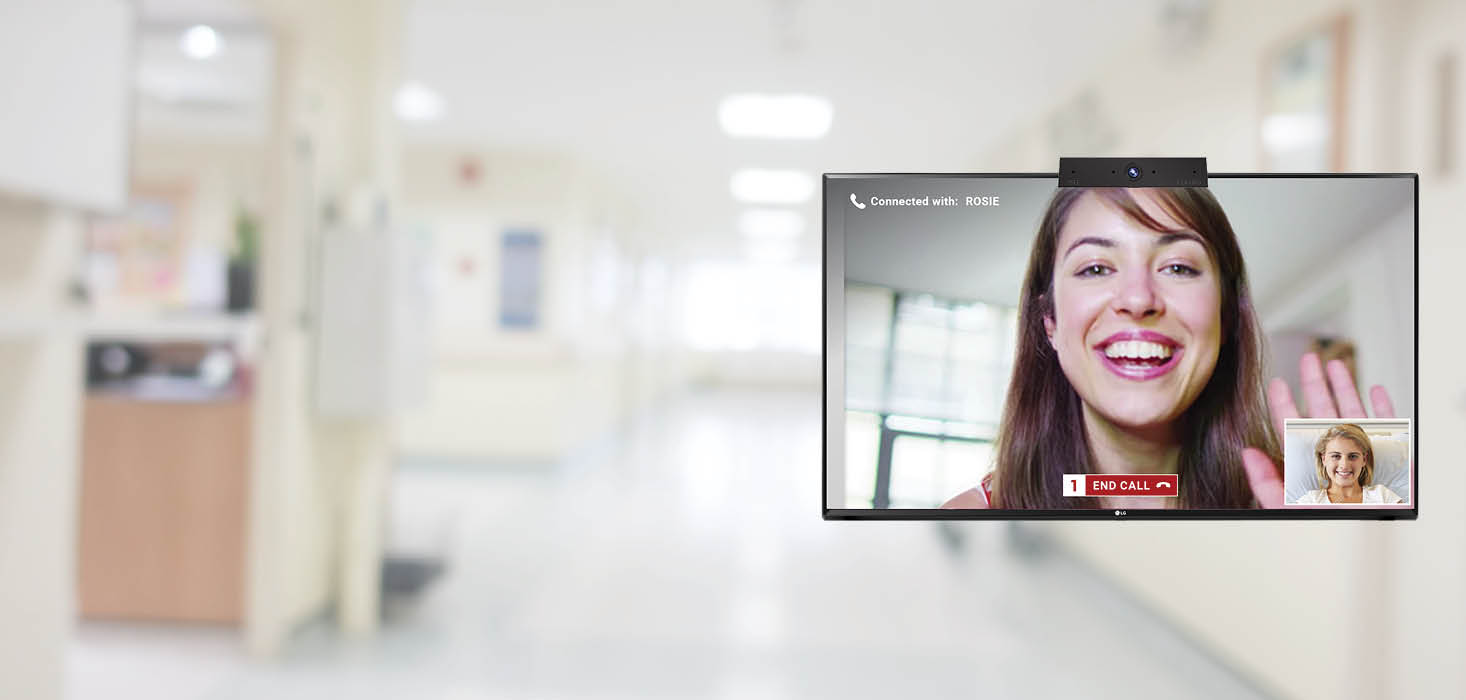
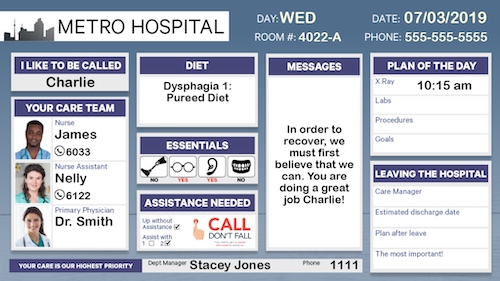 The COVID-19 pandemic has rattled the healthcare industry and caused uncertainty among the public. Protecting those most vulnerable is the number one priority for healthcare workers and facilities. Industry leaders are looking to technology to reduce patient anxiety, allow easy communication between staff, and disperse accurate information.
The COVID-19 pandemic has rattled the healthcare industry and caused uncertainty among the public. Protecting those most vulnerable is the number one priority for healthcare workers and facilities. Industry leaders are looking to technology to reduce patient anxiety, allow easy communication between staff, and disperse accurate information. Interactive patient education has had so much advancement in the medical field in recent years, it’s important to keep patients up to date on the most modern and effective methods of treatment. However,
Interactive patient education has had so much advancement in the medical field in recent years, it’s important to keep patients up to date on the most modern and effective methods of treatment. However, 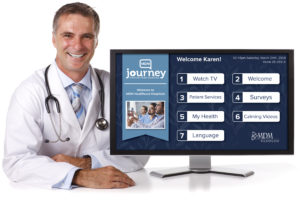 Hospital stays can often be a trying time for patients, and as a healthcare provider, part of your job is to make the patient’s stay as comfortable as possible. Part of the stress that patients and their families feel often comes from a lack of understanding about their condition. And while a brief verbal explanation may suffice for some patients, others may desire more in-depth knowledge about their condition. Unfortunately, many doctors struggle to find ample time to spend with their patients to fully explain the nature of their condition and the treatment options available to them.
Hospital stays can often be a trying time for patients, and as a healthcare provider, part of your job is to make the patient’s stay as comfortable as possible. Part of the stress that patients and their families feel often comes from a lack of understanding about their condition. And while a brief verbal explanation may suffice for some patients, others may desire more in-depth knowledge about their condition. Unfortunately, many doctors struggle to find ample time to spend with their patients to fully explain the nature of their condition and the treatment options available to them.